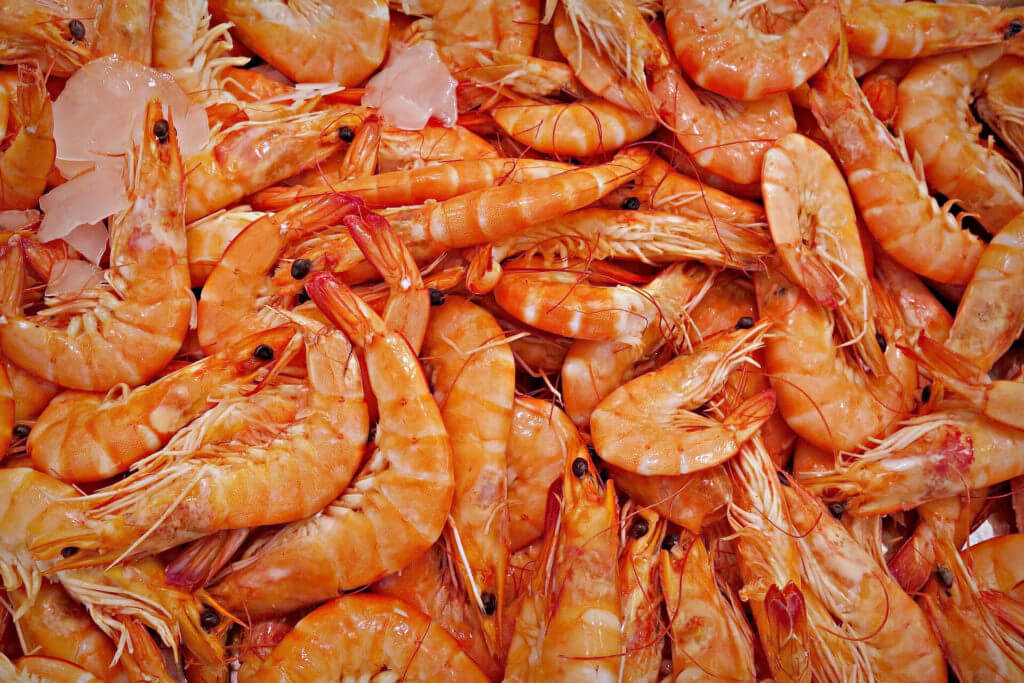Prawns and shrimp are among the most popular types of seafood. The meat has a sweet, delicate in flavor and is considered to be a healthy diet choice. They are a rich source of calcium, protein and antioxidants like selenium. But as familiar and popular as they are, most people couldn’t tell the difference between the two. So what is the difference between the two?
The source for most of the confusion between shrimp and prawns is simply due to how similar the they are in appearance. Shrimp are often referred to as prawns and vice versa throughout the world. In Germany, the United Kingdom, Australia and South East Asia the word prawn is used for both shrimp and prawn whereas in United States and Canada the term shrimp is used for both. The two have been used interchangeably and the distinction has more to do with the area of the world where they are being consumed rather than on their physical appearance.
Both prawns and shrimp belong to the crustacean family decapod that consists of about 200 specific species. Prawns closely resemble shrimp, as well as lobster, with a narrow body, long legs, and a similar tail, torso, and head. However, there are some notable physical distinctions between the two species. The way the shrimp and prawn breath in the water is slightly different. The gill structure in shrimp is known as lamellar. Prawns have branching gill structure.
In the wild, prawns are primarily freshwater creatures but they do migrate to brackish (somewhat salty) water in some instances, depending on the species and location. In terms of commercial aquaculture, prawns are exclusively raised in fresh water.’ Whereas shrimp dwell exclusively in salt water. As you might imagine, this difference can have some impact on the difference in flavor between the two when cooked. These are slight distinctions, but differences none the less.
There is also a slight deviation in the bodies. The shrimp typically has a pronounced hump on the back along the mid torso down to the tail. In contrast, the prawn has a smooth curve along the back of the body. The prawns have three pairs of legs with claws, but shrimp only have two sets of claws on their legs. When reproducing, prawn simply release their eggs into the water for fertilization, but shrimp actually carry the eggs along the bottom of their torso. Lastly, the shrimp has one shell segment that overlaps both sides of the adjacent shells. Prawns have shells that all overlap in the same direction.
There are wide variety of species coming both from the warm water and cold water. Cold water shrimp are smaller and more succulent. Shrimps may vary in color from red, light brown, pink, deep red, grayish-white, yellow, gray-green and dark green. Shrimp and prawns are sold according to their size. The general terms being colossal (10 or less per pound), jumbo (11-15), extra-large (16-20), large (21-30), medium (31-35), small (36-45) and miniature (about 100). In the United States and Canada, jumbo and colossal shrimp are commonly called prawns. Larger shrimp are typically more expensive per pound than smaller specimens. North America is home to several species including white, brown, pink, royal red, Northern and Pacific pink shrimp.
Shrimp and prawns have high nutritional value. Both are sources of iodine, calcium, proteins and other nutrients. Both are a source of polyunsaturated fats which have anti-inflammatory properties and stop the cartilage in joints from eroding. Studies have also found their omega-3s reduce the symptoms of rheumatoid arthritis and have anti-cancer properties.
Shrimp and prawns are served in many dishes. You will find them used in dishes like prawn sauce, tapas, potted shrimp and as garlic prawns in Spain. And in curry dishes and pickled in southeast Asia. Prawns are also served with chicken wings and rice. In the Philippines prawns are cooked’ with ginger, salt and pepper then served in coconut milk. Besides finding their place on restaurant menus, both shrimp and prawn are used in products such as frozen shrimp, dried shrimp, stuffed shrimps, sauces and pastes.

